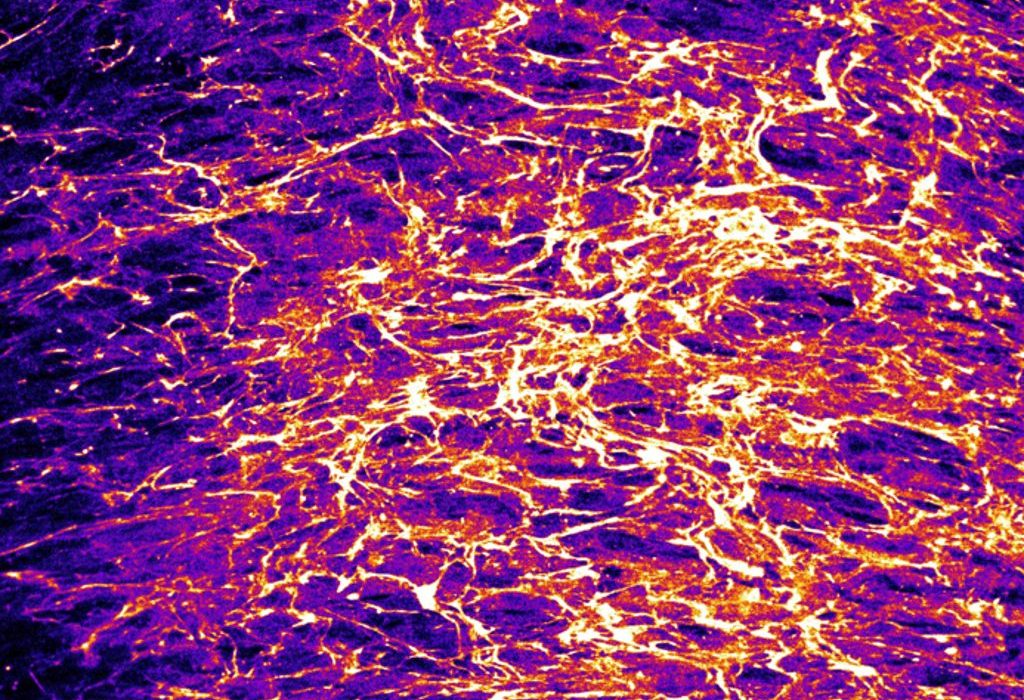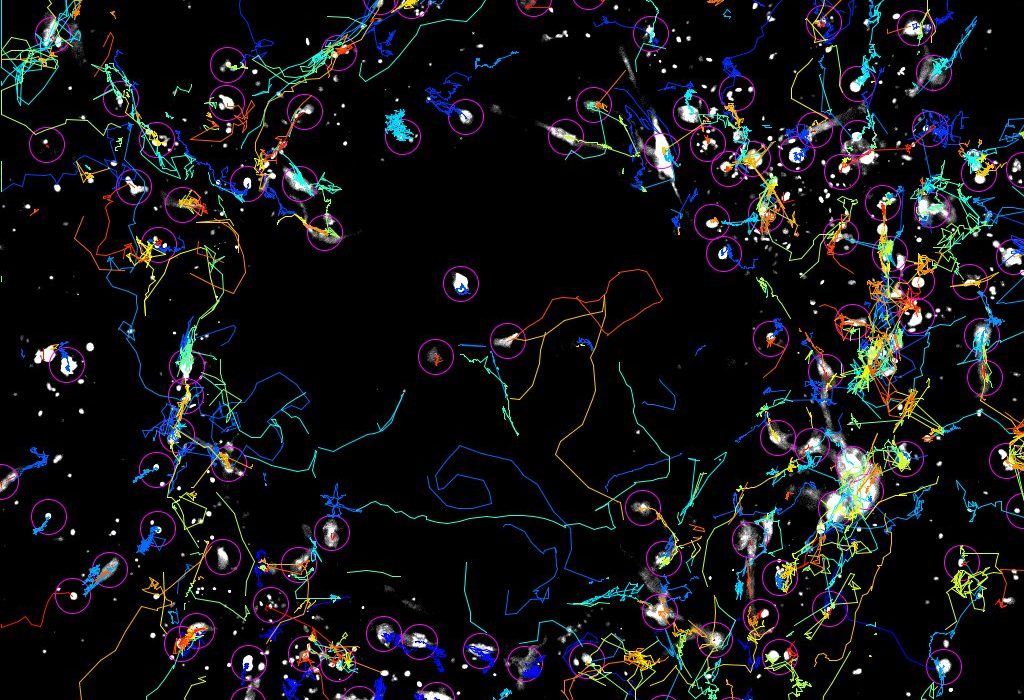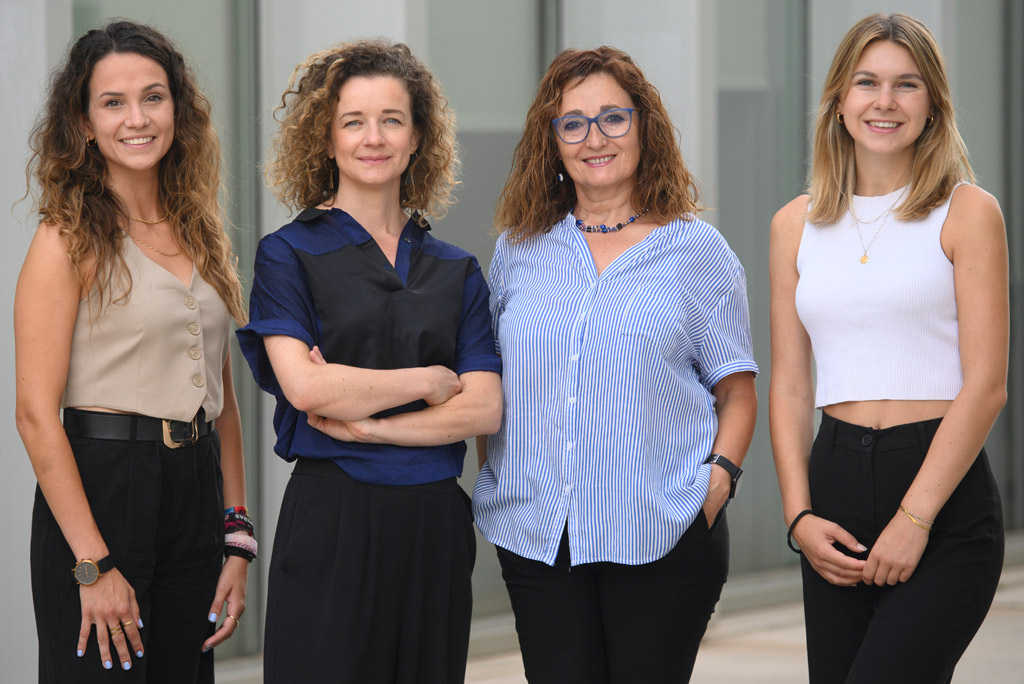Our research focuses on uncovering the mechanisms driving stromal mechanosensing that shape the spatial organisation and cellular crosstalk in healthy and pathological tissues.
Our Team study:
- Cellular mechanosensing (how cells sense and respond to mechanical cues from their environment).
- How the physical properties, composition and architecture of tissues and tumors drive cell migration and intercellular communication.
Our assays combine cellular and molecular biology with microfluidic fabrication, micro-patterning of proteins, live cell imaging, hydrogels with tuneable stiffness and Traction Force Microscopy.
Using those approaches, we design original tissue-like platforms with spatial and temporal control of cell growth, cell migration, intercellular communication, and stiffness sensing.
Our current projects focus on:
- Deciphering the mechanical properties of the tumor microenvironment (architecture and composition) impacts cancer metastasis.
- Understanding how extracellular matrix architecture and mechanical properties impacts immune cell migration in physiological and pathological contexts.
Our group strongly fosters collaborations with the public and private sectors to develop innovative fit-for-purpose multicellular drug testing platforms.
Presentation
Get to know us better


Research Staff
The people who make it all possible
Anna Labernadie
alabernadie@cipf.es
Maria Paz Rubio Rodriguez
mprubio@cipf.es
Publications
Our scientific contributions
Targeted immunotherapy against distinct cancer-associated fibroblasts overcomes treatment resistance in refractory HER2+ breast tumors.
Rivas EI, Linares J, Zwick M, Gómez-Llonin A, Guiu M, Labernadie A, Badia-Ramentol J, Lladó A, Bardia L, Pérez-Núñez I, Martínez-Ciarpaglini C, Tarazona N, Sallent-Aragay A, Garrido M, Celià-Terrassa T, Burgués O, Gomis RR, Albanell J and Calon A
Nature Communications, 2022 Sep, DOI: 10.1038/s41467-022-32782-3, Vol. 13, pag. 5310-5310
CAFs and Cancer Cells Co-Migration in 3D Spheroid Invasion Assay.
Conti S, Kato T, Park D, Sahai E, Trepat X and Labernadie A
Methods In Molecular Biology, 2021 Jan, DOI: 10.1007/978-1-0716-0779-4_19, Vol. 2179, pag. 243-256
Extracellular matrix anisotropy is determined by TFAP2C-dependent regulation of cell collisions.
Park D, Wershof E, Boeing S, Labernadie A, Jenkins RP, George S, Trepat X, Bates PA and Sahai E
NATURE MATERIALS, 2020 Feb, DOI: 10.1038/s41563-019-0504-3, Vol. 19, pag. 227-238
A mechanically active heterotypic E-cadherin/N-cadherin adhesion enables fibroblasts to drive cancer cell invasion.
Labernadie A, Kato T, Brugués A, Serra-Picamal X, Derzsi S, Arwert E, Weston A, González-Tarragó V, Elosegui-Artola A, Albertazzi L, Alcaraz J, Roca-Cusachs P, Sahai E and Trepat X
NATURE CELL BIOLOGY, 2017 Mar, DOI: 10.1038/ncb3478, Vol. 19, pag. 224-237
Protrusion force microscopy reveals oscillatory force generation and mechanosensing activity of human macrophage podosomes.
Labernadie A, Bouissou A, Delobelle P, Balor S, Voituriez R, Proag A, Fourquaux I, Thibault C, Vieu C, Poincloux R, Charrière GM and Maridonneau-Parini I
Nature Communications, 2014 Nov, DOI: 10.1038/ncomms6343, Vol. 5, pag. 5343-5343
FUNDING
Thank you for supporting us




